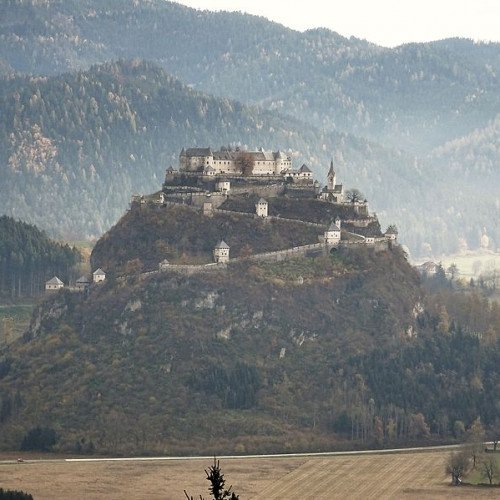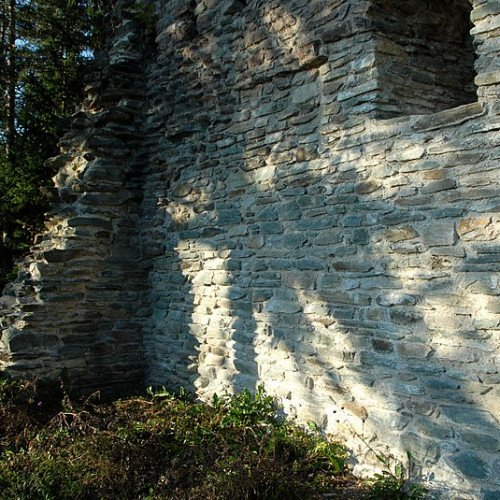Castles of "Austria" HOCHOSTERWITZ CASTLE vs BURGRUINE HOHENBURG AUF ROSENBERG

HOCHOSTERWITZ CASTLE
Hochosterwitz Castle (German: Burg Hochosterwitz, Slovene: Grad Ostrovica) is a castle in Austria, considered one of Austria's most impressive medieval castles. It is on a 172-metre (564 ft) high dolomite rock near Sankt Georgen am Längsee, east of the town of Sankt Veit an der Glan in Carinthia. The rock castle is one of the state's landmarks and a major tourist attraction. Hochosterwitz is 664 metres (2,178 ft) above sea level on the rim of the historic Zollfeld plain north of Magdalensberg, about 7 km (4.3 mi) east of Sankt Veit. It can be seen from a distance of up to 30 km (19 mi) on a clear day. A settlement site since the Bronze Age, the rock was first mentioned in an 860 deed issued by Louis the German, King of East Francia, donating several of his properties in the former principality of Carantania to the Archdiocese of Salzburg. It was then named ‘Astarwiza’, its name being of Slavic origin. It remained a Salzburg possession, until in the 11th century Archbishop Gebhard of Salzburg ceded the castle to the descendants of Count Siegfried of Sponheim in return for their support during the Investiture Controversy. After Siegfried's grandson Henry IV became Duke of Carinthia in 1122, the Sponheim rulers were able to shake off the Salzburg overlordship. Later they bestowed the fiefdom upon the ministeriales of the Osterwitz noble family, possibly a cadet branch of the Sponheim dynasty. In 1209 one Herman of Osterwitz, who held the hereditary office of the cup-bearer at the ducal court in Sankt Veit, accompanied Duke Bernhard of Carinthia to the coronation of Emperor Otto IV in Rome.
Statistics for this Xoptio

BURGRUINE HOHENBURG AUF ROSENBERG
Burgruine Hohenburg auf Rosenberg is a ruined medieval castle near Spittal an der Drau in Carinthia, Austria. It is located high above the Drava Valley on the southern slope of the Ankogel Group, part of the Hohe Tauern mountain range. Probably erected in the late 11th century, the castle was first mentioned as castrum Hohenburc in an 1142 deed. It was then the seat of a Bavarian noble family, who as Counts of Lurn administered the Lurngau (see: Lurnfeld) region within the Duchy of Carinthia. The last count, Altmann, had become Prince-Bishop of Trent in 1124, and upon his death in 1149, the castle was bequested to the Archbishopric of Salzburg and became the seat of episcopal ministeriales. Under the mediation of Duke Ulrich III of Carinthia, in 1263 a division of the property was arranged between the Salzburg archbishops and the neighbouring Counts of Ortenburg, heirs of the extinct Counts of Lurn, who had aspired the Hohenburg estates for decades. In 1311 Archbishop Conrad IV of Salzburg enfeoffed a part of Hohenburg Castle to the sons of late Count Frederick I of Ortenburg (1247–1304). Nevertheless the residence became less important when it was replaced by nearby Feldsberg Castle as administrative seat of the Salzburg possessions. When the Ortenburg dynasty became extinct in 1418, their possessions passed to the Counts of Celje.